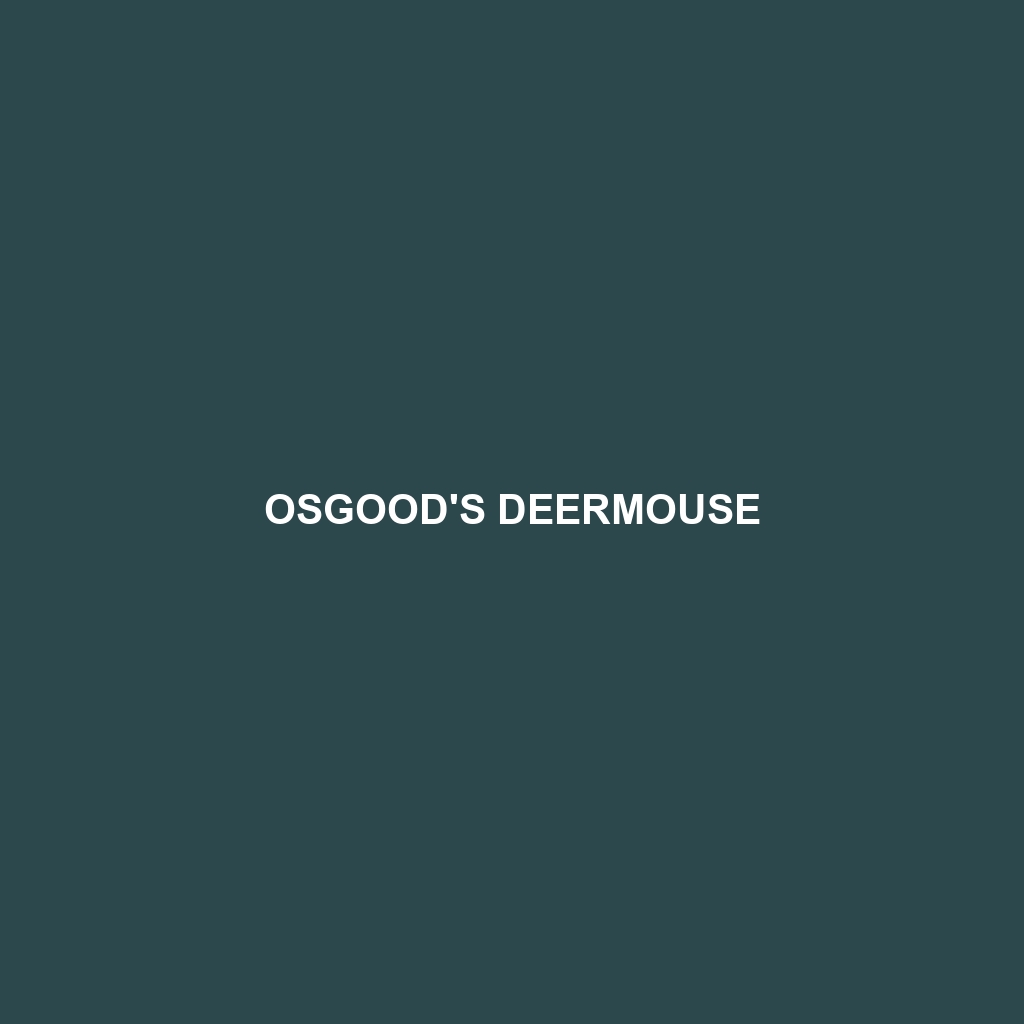Osgood’s Deermouse: A Species Overview
Common Name: Osgood’s Deermouse
Scientific Name: Peromyscus maniculatus osgoodi
Habitat
Osgood’s Deermouse is primarily found in the mountainous regions of the western United States and southwestern Canada. This species thrives in diverse habitats, including coniferous forests, grasslands, and shrublands. Typically, Osgood’s Deermouse prefers areas with ample ground cover and a suitable supply of food, such as seeds and vegetation.
Physical Characteristics
The Osgood’s Deermouse is a small rodent, measuring about 6 to 8 inches in total length, including the tail. It exhibits a sandy or light brown fur color, which helps it blend into its natural habitat. Distinctive features include large, rounded ears, a long, slender body, and a fluffy tail that is typically darker on top and lighter underneath. This species can be recognized by its black eyes and white underparts, which make it quite endearing to those who encounter it.
Behavior
Osgood’s Deermouse is primarily nocturnal, which means it is most active during the night. They exhibit social behavior, often found in small family groups. These mice are known for their agile movement and ability to quickly evade predators. They are proficient climbers and can be seen foraging for food in low bushes or trees. Their sharp senses of smell and hearing play crucial roles in their foraging and mating behaviors.
Diet
The diet of Osgood’s Deermouse is predominantly granivorous, with a preference for seeds, nuts, and berries. They also consume a variety of plant materials and occasionally small invertebrates. This omnivorous diet allows them to adapt to different environments and changes in food availability, making them resilient in diverse ecosystems.
Reproduction
Osgood’s Deermouse has a relatively short breeding season, which typically occurs from late spring to early fall. Female deermice can produce several litters each year, with an average of 3 to 6 offspring per litter. The young are born blind and hairless, relying entirely on their mother for nutrition and protection during the initial weeks of life.
Conservation Status
Currently, Osgood’s Deermouse is not listed as endangered or threatened. However, habitat loss due to urban development and agriculture poses potential risks to local populations. It is essential to monitor their populations and habitats to ensure their continued survival.
Interesting Facts
One fascinating aspect of Osgood’s Deermouse is its ability to store food in various locations, which helps them survive during harsh winters. These rodents can also produce various vocalizations, including squeaks and chirps, to communicate with one another. Scientists believe that their behaviors contribute significantly to seed dispersion within their habitats.
Role in Ecosystem
Osgood’s Deermouse plays a vital role in its ecosystem through its interactions with other species. As both prey and seed dispersers, they help maintain the balance within the food web. Predators such as birds of prey, snakes, and mammals rely on them as a food source, highlighting their importance in supporting local biodiversity.

